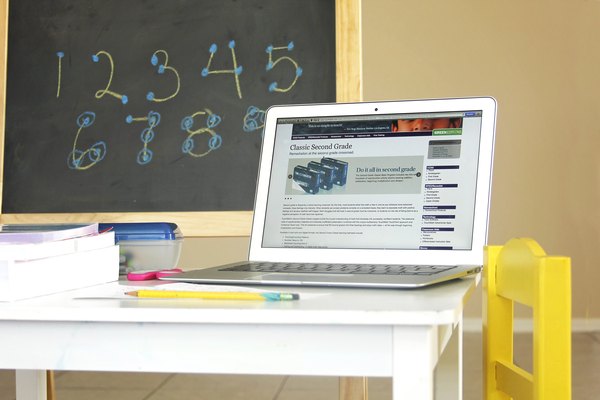TouchMath is a multisensory math program designed for pre-K through third grade. The program helps make math concepts easier and more accessible for students with different learning styles or learning difficulties. The approach uses auditory, visual and tactile strategies for understanding numbers and operations. You can use the program to help students prepare for new math principles, to supplement grade-level programs, or for enrichment activities.


Every number from one through nine has physical points on the actual number that the user will touch. These are the “TouchPoints.” Numbers one through five each have single points the user touches. Numbers six through nine have double points or a combination of double and single points that the user taps. These points are represented by dots. The student touches the pencil to the number while counting aloud. For example, the number one has a single dot. Number two has two dots. Number three has three dots -- one at the top where the number begins, one in the middle after the first curve and one at the bottom, where the number ends. As the students touch each dot, they count.
Teaching the System

•••
Teach the students how to use the program by showing the numbers with the actual dots on the numbers. Explain that the number of dots on an arithmetic number helps them know the name and value of that number. Show the students how to use the program, pointing at each dot as you count aloud by ones for each given number. Then, have the class count aloud with you as you repeat the process for each number one through five. For numbers six through nine, explain that some dots are now double dots. Not enough room exists on the numbers to use single dots exclusively, so you count some dots twice. You can show this to the students by counting dots on the device. For the number six, count "one, two" on the first dot, "three, four" on the second dot and so on. For numbers seven and nine, you will see single and double dots.
Teaching Arithmetic Operations

•••
Once the students have learned how the program works for individual numbers, you can use the system to teach addition, subtraction, multiplication and division. For addition, students touch the dots while counting forward. For subtraction, students touch the dots while counting backward. For multiplication and division, the students will count in sequences. Offer plenty of opportunities for the students to practice using the device for math operations. The program will help students visualize and eventually memorize the value of the numbers or number sentences.
No comments:
Post a Comment